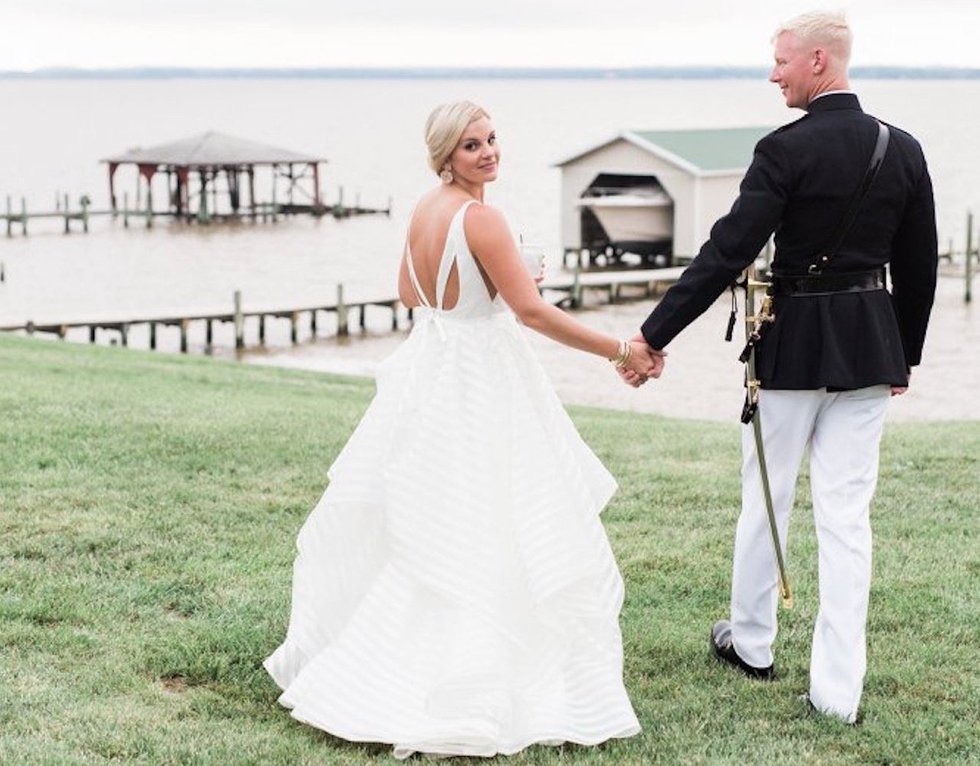Remembering Fairfax Hall

In 1955, I was packed off to Fairfax Hall in Waynesboro for “finishing.”
My rebellious teen-age behavior had convinced my parents this was the road to my salvation. Driving up to the huge three-storied brown-shingled structure was slightly overwhelming to a 14-year-old girl who had never been away from home before. But the columned front porch looked comforting. My parents walked me into the foyer, imposing and elegant with its dark, finely polished woodwork and numerous fireplaces. A magnificent staircase with a smooth wide banister — made to order for a slide — stood in the center of the entrance hall and beckoned wantonly.
I was assigned a room with the rest of the freshman and sophomores on the third floor. The south end of the hall was reserved for freshman and one housemother, the north end for sophomores and their housemother. I shared a room with a girl from Harlan, Kentucky, who told more-than-you-ever-wanted-to-know stories of her escapades with numerous boyfriends. Being more than the typical playful teenager, I soon became the ring-leading prankster of the hall. It wasn’t long before I was ordered to the office of Mrs. Strother, our admonishing headmistress, and was promptly assured that if I didn’t readjust my focus, “extreme measures” loomed on my horizons. Clearly, they felt that short sheeting the staff’s beds and leaving deceased creatures between those sheets was not acceptable behavior for a young lady.
Fairfax Hall did indeed bring about my redemption — not where my mother might have envisioned, but in the stables. Miss Roberta Mount, the aptly named riding teacher, captivated me. She was my absolute favorite: a petite, perky, athletic, young woman with short clipped blond hair and laughing eyes. Miss Mount taught me stable routine from the bottom up, and I loved it all — the grooming, tacking up and the feeling of flying without wings astride one of the noble creatures cantering over the countryside. The knowledge I gleaned from my mentor enabled me to become a riding teacher and to run my own stable later in life.
The school closed in 1975, a victim of changing times. But the building, designed by Stanford White, lives on. Fairfax Hall, which got its start as a railroad hotel, has seen service as a music school and even, for a dismal time, as a correctional training facility for prison employees. Today, after extensive renovation, the hall has been restored to its original elegance and converted into affordable housing for seniors. Those who wish can rent the dining room for special events.
I recently returned to the hall, and my visit was a walk back in time; the buildings were exactly as I remembered. The many-windowed gymnasium building, one of my favorite spots, is lovely still. Swimming was part of our gym program, and we all anticipated a dip in the large, sparkling pool in the gym’s basement after a brisk game of basketball. I was delighted to see a living tribute to the hall’s tradition of horseback riding — a statue of Brown Beauty, a bay gelding at the school, resides on the front lawn greeting visitors. The voices and laughter of the past had me once again sitting on one of the sofas in front of the fireplace, flirting with a Fishburne Military Academy cadet on a Sunday afternoon as he filled me in on his football prowess from the previous day’s game.
More information about Fairfax Hall is available at FairfaxHall.net.









